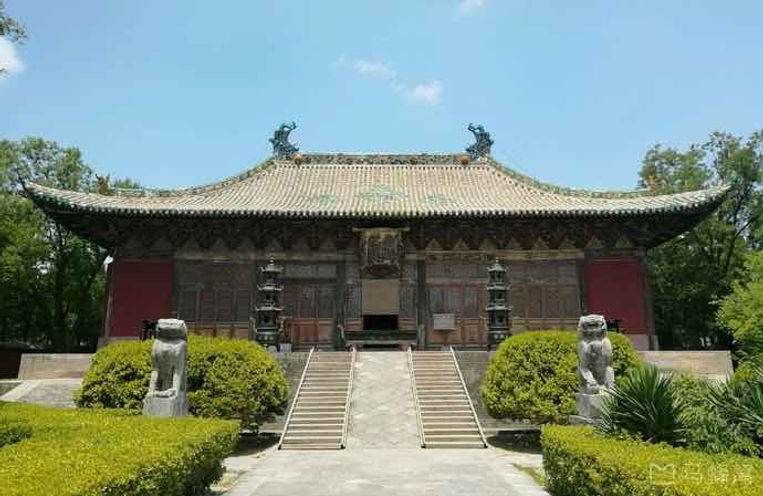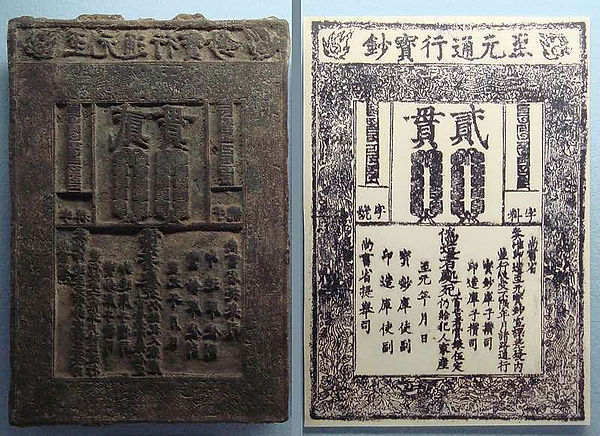Yuan Dynasty — An Era of Semi-Anarchism
The Yuan Dynasty (1271 — 1368) was a unified imperial dynasty in the history of China, established by minority Mongols and characterized by a period of semi-anarchistic rule and extensive territorial holdings.
The Yuan Dynasty lasted for 97 years and was ruled by 11 emperors.

Underglaze Red (You Li Hong) Cup of Yuan — Hangzhou Museum (Photo by Dongmaiying)
Brief History of the Rise and Fall of the Yuan Dynasty
Political Structure and Social Systems of the Yuan Empire
Yuan Dynasty Achievements in Science and Technology

Restoration Map of Yuan's Imperial Palace in Yuan Dadu
Yuan Dynasty Facts
-
The Yuan Empire had a vast territory and was divided into different provinces, which are still used in China today.
However, Yuan’s governance of most provinces was quite loose, which was believed to be half Anarchism.
-
Because of the Yuan’s loose governance and vast territory, international trade through the Silk Road during this era was relatively prosperous.
Many religions, products, and technology were disseminated freely into the Yuan Empire, and paper money was issued and widely used.

Stone Rubbing Recording International Trade Activities of A Merchant of Yuan — National Museum of China
-
Yuan only held the Imperial Examination 13 times, while their ruling classes returned to the Aristocracy.
In those exams, Zhu Xi’s theory was respected as the official ideology. And Confucius was honored as a king.
-
Qu, a type of classical poetry form, was quite famous and well-developed during the Yuan era, which is respected as a significant cultural achievement of the Yuan.

Dwelling in the Mountains (Shan Ju Tu), By Artist Qian Xuan (1239 — 1299) of Yuan — The Palace Museum
Brief History of the Rise and Fall of the Yuan Dynasty
Expansion of Genghis Khan and Establishment of the Yuan Empire
When the Southern Song Dynasty (1127 — 1279) was fighting against the nomadic regime Jin that had captured their emperors, Genghis Khan was trying to unify the Mongolian Plateau.
Soon, the Mongol Empire was established and kept expanding because of his extraordinary military talents.
After Genghis Khan passed away on his way back from conquering the Western Xia Dynasty (1038 — 1227), his descendants further expanded the realm and kept fighting against each other over the throne.
His grandson, Kublai Khan, achieved final success after years of intense wars and established the Yuan Dynasty in 1271 in northern China.
Eight years later, he perished the Song Dynasty in southern China, unified the nation, and extended the Grand Canal, which further connected the south and north and promoted the national economy.

Painting of Emperor Kublai Khan's Hunting (Yuan Shi Zu Chu Lie Tu), By Artist Liu Guandao of Yuan — Taipei Palace Museum
Half-Anarchic Governance and Intense Contention Over the Throne
With the assistance of an excellent prime minister named Yelv Chucai, the Mongol rulers stopped the slaughter and built a fine system.
The central government mostly paid attention to getting enough taxes; as for other aspects, the monarchs of the Yuan cared much less.
Therefore, the Yuan Empire was an open-minded era in which literature, religion, business, etc., all could develop freely.
After Kublai passed away in 1294, in the next 39 years, 9 Yuan emperors reigned the empire successively when the fights over the throne among nobles were quite intense.
Until Toghon Temür, also respected as Emperor Huizong of Yuan, ascended to the throne and started his 38 years of reign.

Yongle Palace (Built in 1247 — 1358) in Shanxi Province, An Important Representative Architecture of Yuan

Part of the Taoism Religion Murals on the Walls inside the Yongle Palace
Ambitious Engineer Emperor
Toghon Temür was an ambitious monarch at the beginning who implemented a series of reforms, trying to make a significant change.
He stopped invasive wars and started to pay attention to agriculture and the recovery of the Imperial Examination.
Nevertheless, the endless wars and heavy taxes inflicted countless chaos and suffering upon civilians. Coupled with severe racist policies and significant natural disasters, large-scale rebellions began to emerge nationwide.
Because he was incapable of making his empire prosperous, Emperor Toghon Temür changed into a person who loved enjoying life and having fun.
He was an excellent engineer and was also good at astrology.

Carved Red Lacquer Plate of Yuan with Narcissus Pattern— The Palace Museum (Photo by Dongmaiying)
Retreating and Ending of the Unified Yuan Dynasty
In the year 1368, after having carefully read the stars, Emperor Toghon Temür led his Mongolian nobles and troops and escaped northward when an uprising army led by Zhu Yuanzhang was marching toward his capital city.
This army defeated other forces and established the unified Ming Dynasty (1368 — 1644).
The Yuan Empire, however, ended as a unified regime.
The Royal Golden Family perished decades later by General Lan Yu of the Ming Dynasty.

Observatory Constructed During Yuan Era in the Mount Song
Political Structure and Social Systems of the Yuan Empire
Population
At its zenith, the population of the Yuan Dynasty is estimated to have reached approximately 90 million.
Political System
The central government of the Yuan Dynasty consisted solely of the Department of Imperial Secretariats, functioning as the administrative agency.
Subordinate to the Department of Imperial Secretariats were the Six Ministries:
-
Ministry of Personnel: Responsible for the appointment, assessment, and removal of officers.
-
Ministry of Revenue: Manages household registration, finance, and taxation.
-
Ministry of Rites: Oversees ceremony and education.
-
Ministry of National Defense: Handles military affairs.
-
Ministry of Justice: Manages law, judiciary, and punishment.
-
Ministry of Constructions: Responsible for the design and implementation of national constructions.
At the local level were the Branch Secretariats, also known as the Province System, which is still in use today.
Official Selection System
The official selection system during the Yuan Dynasty comprised hereditary aristocracy and occasional instances of Imperial Examination.

Mountain Shaped Blue and White Porcelain Shelf of Yuan to Place Writing Brushes — Hangzhou Museum (Photo by Dongmaiying)
Tax System
-
Capitation and land taxes were levied in the North, whereas in the South, individuals paid taxes using farmland products or money during the summer and autumn, depending on their land's production.
-
In addition, each family was required to contribute a specified amount of money or products (which varied across different regions) to be exempt from labor services.
-
Civilians were also obligated to participate in extensive construction, transportation, or other military-related industries whenever the royal authorities demanded their services.
-
These taxes further varied based on ethnicity, with Han people bearing the heaviest burden, while Mongols contributed the least.

Banknote and Its Pringting Plate of Yuan — Tokyo Currency Museum (Photo by PHGCOM)
Military Service
Professional military families were selected and documented, with individuals expected to pursue this career path from generation to generation.
These military families were required to furnish a specific number of soldiers and, in return, were granted farmland along with exemptions from a portion of taxes.
During periods of military service, they were responsible for providing for themselves.
Land System
The Yuan Dynasty witnessed the coexistence of aristocratic, government-owned lands, and privately owned land.

Calligraphy of Scholar Zhao Mengfu (1254 - 1322) — The Palace Museum (Photo by Dongmaiying)
Yuan Dynasty Achievements in Science and Technology
-
Calendar of Fixing Time (Shoushi Calendar) by Guo Shoujing: a great Astronomy masterpiece, which set that one year includes 365.2425 days.
That is only 26 seconds away from today’s accurate measurement.

Jian Yi (Abridged Armilla) the Instruments to Measure the Position of Celestial Bodies, Invented by Guo Shoujing of Yuan
Yuan Dynasty Art and Artifacts
Photo by Museum Photographer Dongmaiying
Next: Ming Dynasty (1368 — 1644) — Epoch of All Round Prosperity
Related Articles:
Brief Introduction to Chinese History
Neolithic Era — Primitive Society and Mythical History
Xia Dynasty (Around 2070 BC — 1600 BC) — the First Hereditary Kingdom in China
Shang Dynasty (1600 BC — 1046 BC) — Empire of Bronze Age and Scripts on Oracle Bones
Zhou Dynasty (1046 BC — 256 BC) — Decency, Hierarchy, and the Feudalism System
Spring and Autumn Period (770 BC — 403 BC) — Great Philosophers and Contention of Warlords
Warring States Period (403 BC — 221 BC) — Wars Among the Seven Kingdoms
Qin Dynasty (221 BC — 207 BC) — Epoch of Great Unification
Han Dynasty (202 BC — 220 AD) — Golden Era of Legendary Civilians
Three Kingdoms, Jin, North & South Dynasties (220 — 589) — Wars and Conspiracy in Turbulent Times
Sui Dynasty (581 — 618) — Transient Age and the Inaugurator of Prosperity
Tang Dynasty (618 — 907) — Flourishing Golden Age
Five Dynasties and Ten Kingdoms (907 — 979) — Decades of Wars and Chaos
Song Dynasty (960 — 1279) — Wealthy Empire with Tragic Encounters
Qing Dynasty (1636 — 1912) — Extreme Centralization and Closure
Famous Historical Figures in Ancient China


















